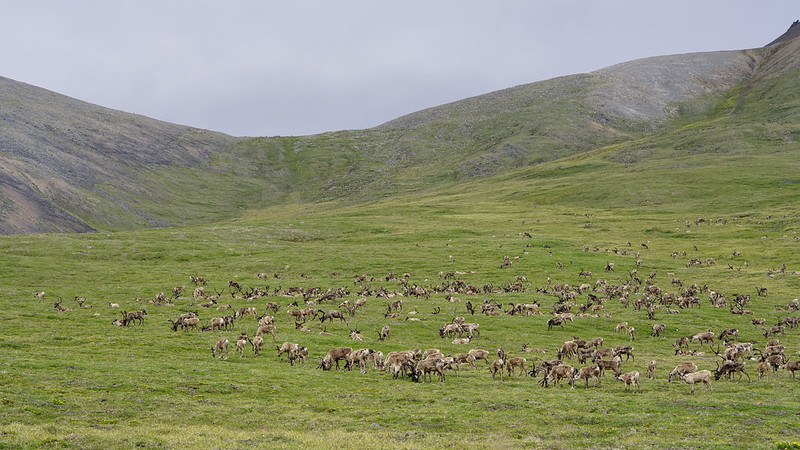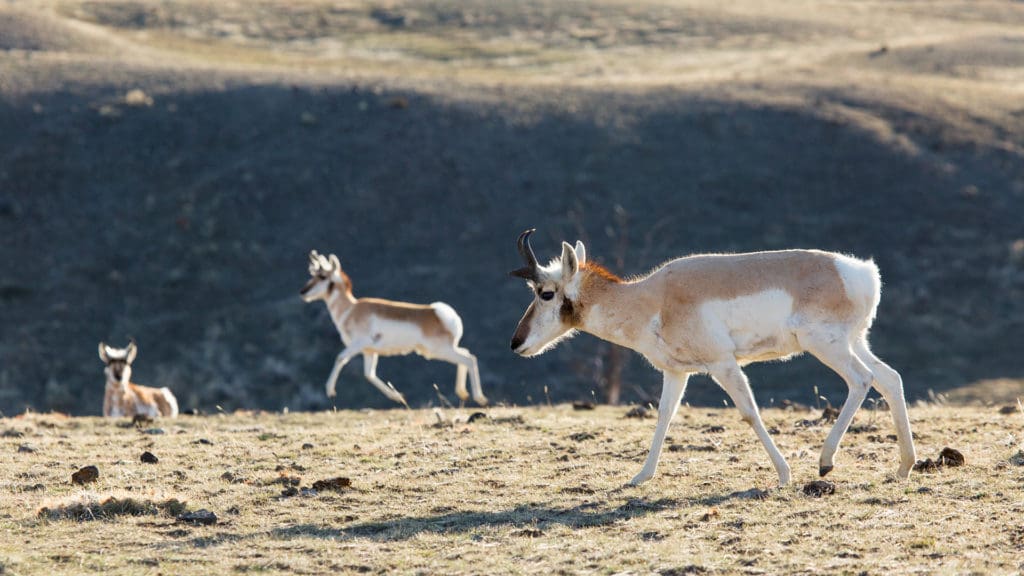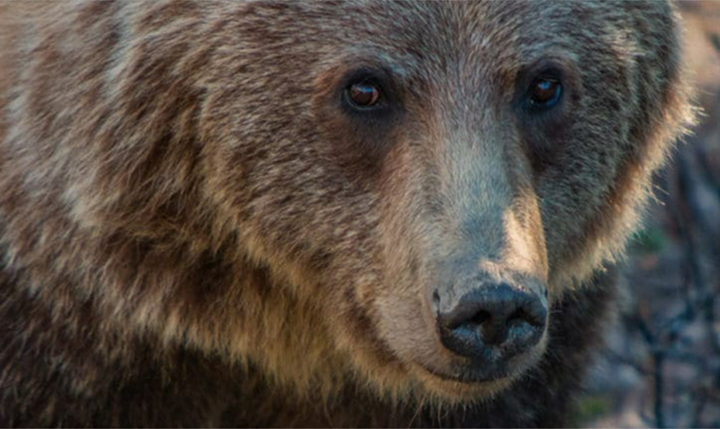Improving migration in the Yellowstone to Yukon region — and beyond
Year after year, migrating hooved mammals, or ungulates, pound their hooves into the ground traversing vast areas of the planet, including in the Yellowstone to Yukon region.
The movements are as diverse as the species themselves: from Mongolian gazelles and saiga in Asia, wildebeest in the Serengeti, to arctic caribou, mule deer and elk in North America, and many more.
Migratory ungulates are an essential part of natural ecosystems and provide much of the prey for the world’s carnivores. The migrations also contribute to local and regional economies through harvest and tourism, and are woven into the culture of numerous communities.
Unfortunately, many of these iconic ungulate migrations are in steep decline due to human disturbances like roads, fences, and other types of development. In some cases, migrations have been lost even before they have been documented, highlighting the magnitude of the conservation challenge.
As one of few intact mountain corridors in North America, Yellowstone to Yukon has hundreds of migration paths crisscrossing it. Even in this landscape, we know that we are losing migrations, for example those of western Canada’s woodland caribou.
To keep this landscape intact and functional requires knowing where these migrations are and how they are doing in order to conserve them. Thanks to coordination from international scientists and conservationists, work has begun on mapping the first-ever global atlas of ungulate migrations.
The Global Initiative on Ungulate Migration was launched with the publication of a commentary titled “Mapping out a future for ungulate migrations,” in the May 7 issue of the journal Science.
The detailed maps of the seasonal movements of herds worldwide will help governments, Indigenous people and local communities, planners, and wildlife managers to identify current and future threats to migrations, and advance conservation measures to sustain them in the face of an expanding human footprint.
This team of 92 scientists and conservationists is working in partnership with the Convention on Migratory Species to advance the worldwide conservation of elk, deer, pronghorn and other ungulates, or hooved, mammals.

One example is the Porcupine caribou herd that migrates vast distances each year, usually between Alaska and Yukon’s arctic coast in the spring and the Yukon’s Ogilvie Mountains in winter.
Road building and oil and gas exploration threatens their calving grounds and migratory route. Climate change alterations to the distribution of water, snow, ice and plant green-up further complicate how the migratory herds must time and navigate their seasonal movements.
The new atlas will help decision-makers plan and implement additional infrastructure projects to mitigate or eliminate their barrier effects.
“A global migration atlas is urgently needed because there has never been a worldwide inventory of these phenomenal seasonal movements,” says lead author Matthew Kauffman, a wildlife biologist with the U.S. Geological Survey. “As landscapes become more difficult to traverse, the maps can help conservationists pinpoint threats, identify stakeholders, and work together to find solutions.”
The effort builds on numerous conservation successes that were made possible through mapping of migrations. Around the world, actions such as protected-area expansion, road-crossing structures, and working-lands conservation initiatives have been catalyzed by tracking the actual migration routes of the herds.
Migratory animals depend on different habitats to feed, breed, and rest. If their movements are restricted, the survival of entire populations is at stake.
Climate change alterations to the distribution of water, snow, ice and plant green-up further complicate how the migratory herds time and navigate their seasonal movements. The global atlas of migration will help decision-makers prioritize which areas along migration routes to conserve in order to safeguard the diverse benefits they provide to humanity.
“As development, roads and other barriers expand around the world and in the Yellowstone to Yukon region, migrating wildlife must deal with the effects. We hope these maps and research will spark conservation actions to sustain important wildlife migrations,” says Jodi Hilty, coauthor and president and chief scientist of Yellowstone to Yukon Conservation Initiative.
To coordinate this large effort, the international team has partnered with the Convention on Migratory Species to create the Global Initiative for Ungulate Migration.
“The global atlas is a very important initiative that will help further the conservation of these unique animals,” says CMS executive secretary Amy Fraenkel. “We are pleased to support this work and to have a powerful new tool to share with our Parties and partners to enhance their efforts to protect migrating herds around the world.”
The new global initiative will utilize the latest GPS tracking technology, mapping software, and data-sharing platforms, combined with local and indigenous knowledge. The team will also endeavor to map lost migrations and obtain and document local and historical knowledge of animal movements.
“We hope these maps and research will spark conservation actions to sustain important wildlife migrations.”
Dr. Jodi Hilty, Y2Y
The very few migration maps assembled today already underscore that protected areas are far too small and scattered to protect the wide-ranging movements. At the same time, these maps highlight how numerous landowners and communities have stewarded the working landscapes that animals traverse. For example, the cultural traditions and identity of the Inuit and Tlicho in Canada are deeply rooted in migratory caribou. Maps that display migration data together with the human connections and livelihoods associated with these same landscapes help advance sustainable conservation.
Background on Convention on Migratory Species
The Convention on Migratory Species is an intergovernmental organization that operates under the umbrella of the United Nations Environment Programme. This unique platform allows 130 signatory countries to work together on a global scale to address the conservation needs of terrestrial, aquatic, and avian migratory species and their habitats.
The launching of the Global Initiative on Ungulate Migration is timely given the increasing international focus on protecting biodiversity. A new UN global strategy on biodiversity known as the Post-2020 Global Biodiversity Framework is expected to be agreed to this year. CMS Parties have singled out the importance of ecological connectivity, including animal migrations, as a key priority for the new framework.
As entities create plans to combat the twin crises of climate change and biodiversity loss, a global atlas of migration will enable the seasonal movements of migratory ungulates to be included in these new efforts, safeguarding the diverse benefits that migrating herds provide to humanity.
For more information about the GIUM, consult the commentary in Science, or visit cms.int/gium.


